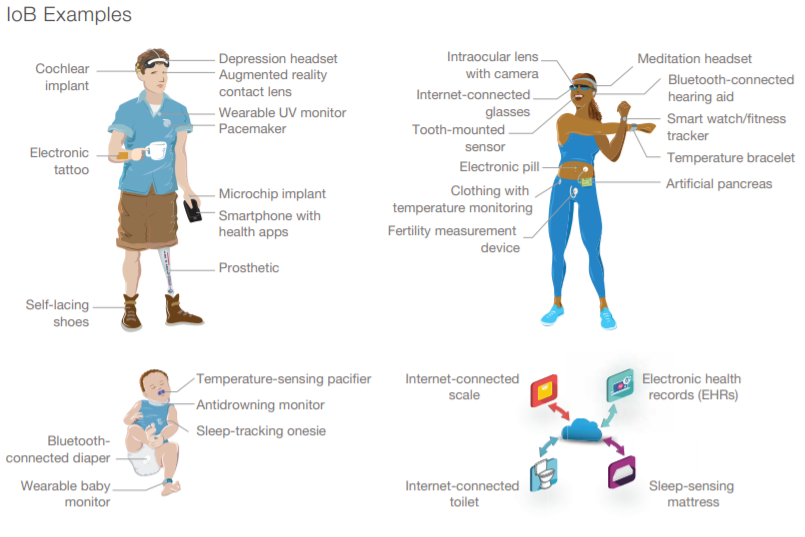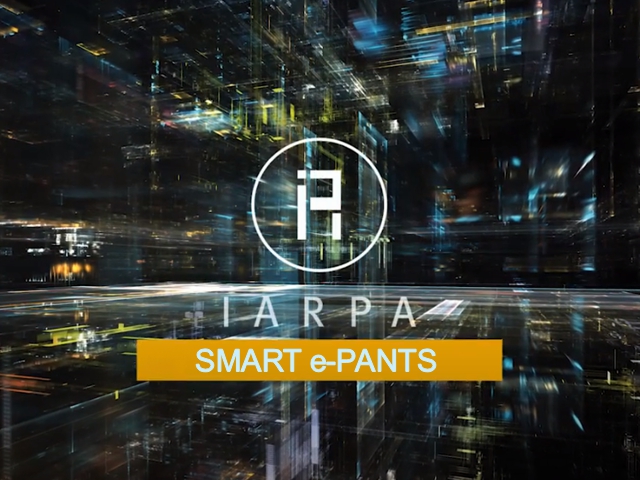The US Intelligence Community is requesting information on how to develop comfortable smart clothes that can “sense, process, and communicate information on individuals’ location and physical surroundings.”
The Intelligence Advanced Research Projects Activity (IARPA) is looking to outfit smart clothing clandestinely clad in cameras, sensors, microphones, “scrunchable” batteries, and “energy harvesters powered by the body.”
“Proposed technologies […] must be flexible and stretchable enough to incorporate into garments with no significant change in comfort, style, or performance of the clothing article” — IARPA ‘SMART e-PANTS’ RFI
Earlier this month, IARPA put out a request for information (RFI) for Smart Electrically Powered and Networked Textile Systems (SMART e-PANTS) that utilize “innovative approaches to enhance the performance of Advanced Smart Textile (AST) systems.”
According to IARPA’s latest request for information, new enabling research to transfer many of the capabilities of rigid wearable electronics into ASTs has surfaced, including:
- Weavable, conductive polymer “wires”
- Energy harvesters powered by the body
- Computers and other electronic components that are printable on cloth and that run on nanoamps of power
- Microphones that behave like threads
- “Scrunchable” batteries that can function after multiple deformations
“Comfort and convenience has long been envisioned, free of uncomfortable, bulky, rigid devices strapped to their bodies” — IARPA ‘SMART e-PANTS’ RFI
In order to be considered responsive for the SMART e-PANTS RFI, “The proposed technologies must perform the intended purpose of the component or system described by the list below, and must also be flexible and stretchable enough to incorporate into garments with no significant change in comfort, style or performance of the clothing article (i.e., no visually evident rigid components).”
- Sensors: Audio, video, and geolocation. (State of health and molecular sensors are not considered responsive)
- Power Sources: Possible technologies include, but are not limited to:
- Batteries, supercapacitors, and thermal, kinetic or chemical energy harvesters that use their surroundings (such as body heat or excretion) as an energy source
- Computation and Data Storage: Microprocessors, I/O buses and data storage devices
- Data Transfer: Systems capable of transferring data from an AST to a storage or computation device:
- Data transfer systems do not need to be bendable or stretchable, so long as they are not meant to be physically incorporated into the AST
- Wires and Interconnects: Electrically conductive materials that enable connection between AST components in a system
- Haptics: On/off or intensity regulation devices (i.e. switches or dials) that indicate device status to the wearer by changing shape, size, vibration, or producing some other discernable user response
“Revolutionary new materials and manufacturing techniques are needed to develop textile-friendly system components that resemble garments rather than rigid structures” — IARPA ‘SMART e-PANTS’ RFI
Whereas many commercially available smart clothes are clunky with their tech, IARPA is looking to develop smart clothing that is “free of uncomfortable, bulky, rigid devices strapped to their bodies” that can “employ energy to power built-in sensors and/or actuators that sense, store, interpret or react to information from their environment.”
Therefore, “revolutionary new materials and manufacturing techniques are needed to develop textile-friendly system components that resemble garments rather than rigid structures.”
“It’s now time for the Internet of Bodies. This means collecting our physical data via devices that can be implanted, swallowed or simply worn, generating huge amounts of health-related information” — Xiao Liu, World Economic Forum

Internet of Bodies Examples, RAND Corporation
With its networking capabilities and abundance of sensors, smart clothing is part of a growing ecosystem known as the Internet of Bodies (IoB), which runs on the same principles as the Internet of Things (IoT), but for people.
“After the Internet of Things, which transformed the way we live, travel and work by connecting everyday objects to the Internet, it’s now time for the Internet of Bodies,” wrote Xiao Liu, Fellow at the World Economic Forum’s Center for the Fourth Industrial Revolution.
“This means collecting our physical data via devices that can be implanted, swallowed or simply worn, generating huge amounts of health-related information.”
“Widespread IoB use might increase the risk of physical harm, espionage, and exploitation of data by adversaries” — RAND Corporation report
According to a recent RAND Corporation report, widespread IoB adoption has the potential to:
- Increase the risk of physical harm, espionage, and exploitation of data by adversaries
- Increase global geopolitical risks, because surveillance states can use IoB data to enforce authoritarian regimes
- Enable a surveillance state of unprecedented intrusion and consequence
“Developing these new sensors and detectors, as well as thinking about clever ways to collect multi-modal data to reveal what our adversaries are attempting to hide from us is at the very core of what our collection programs are aimed at doing” — Catherine Marsh, IARPA Director
Speaking on the last day of the Department of Defense Intelligence Information System (DoDIIS) Worldwide Conference in December, 2021, IARPA Director Dr. Catherine Marsh explained that moving beyond collecting data from remote cameras, IoT devices have now become a growing source of data for the Intelligence Community to collect, analyze, and learn about the intent of its adversaries.
“Remote sensors and cameras have become ubiquitous across the world, and they’re a source of data that intelligence agencies did not have for them a generation ago,” said Marsh.

Catherine Marsh
“Internet of Thing devices are a growing source of data that can be collected to learn intent” — Catherine Marsh, IARPA Director
“Smart collection techniques are needed to collect the right data from these sources and preprocess it in the field to provide useful information rapidly to analysts.
“Similarly, Internet of Thing devices are a growing source of data that can be collected to learn intent.
“Developing these new sensors and detectors, as well as thinking about clever ways to collect multi-modal data to reveal what our adversaries are attempting to hide from us is at the very core of what our collection programs are aimed at doing,” she added.
If SMART e-PANTS were to eventually turn into a fully-funded research program, then it would have the potential advance the American spy apparatus with hidden power sources, sensors, and other data collection devices weaved into smart clothes.
Since an RFI is “designed to gather more information on an idea,” and is “not a commitment to funding or even a guarantee that a program will be initiated,” it is too early to tell whether SMART e-PANTS will evolve into a fully-funded research program.
Responses are due by January 31, 2022.
Pentagon is researching gene editing, Internet of Bodies & AI to enhance human performance: RAND
‘IoT devices are a growing source of data that can be collected to learn intent’: IARPA director
How to track & trace every person, purchase, and protein on the planet & manipulate human behavior
Your digital identity can be used against you in the event of a great reset













